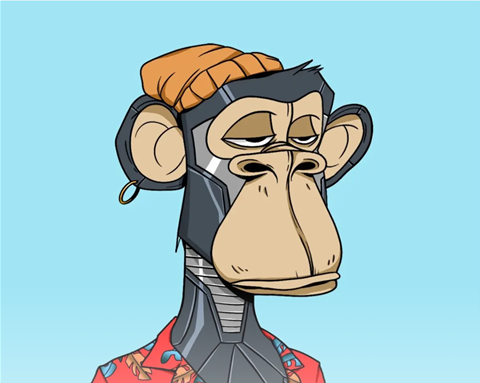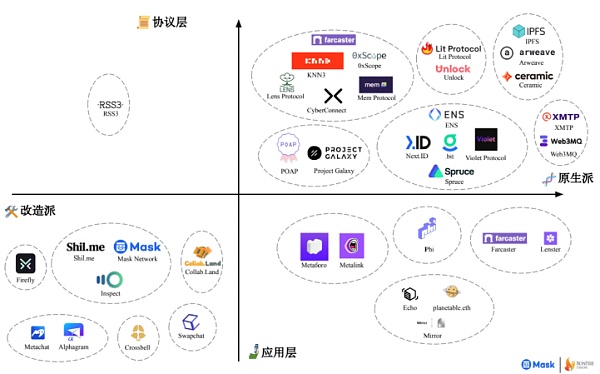Blockchain’s Ambition: Anti-Keynesianism, Public Life, and Transhumanism
Blockchain's goals: rejection of Keynesianism, transparency in public life, and the integration of technology and humanity. 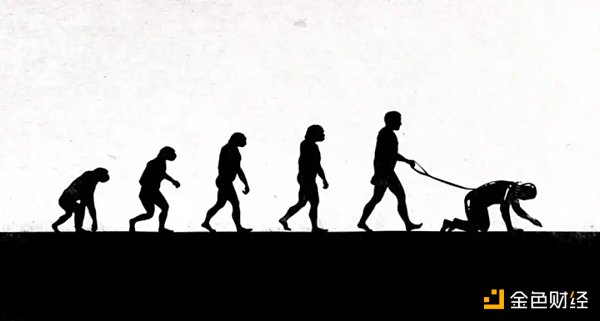
EDCON2023 in Montenegro has come to an end. In addition to the usual topics in the crypto community, there were also a lot of discussions on transhumanism/longevity. The “Conversation on Transhumanism in SeeDAO” before the event could be considered a warm-up for the SeeDAO Montenegro event. During the event, I also participated in a small meeting hosted by SeeDAO, where I gave a speech on the topic of “The Condition of Digital Age Humans: The Void of the Real World vs. the Reality of the Virtual World”, which was also arranged under the “Transhumanism” agenda.
Why is the crypto community interested in “transhumanism”? The simplest explanation is that “the leaders like it”. Vitalik Buterin, the founder of Ethereum and the undisputed leader of the Ethereum community, has long been interested in longevity and has provided investment to related research institutions. He advocates the “parable of the dragon tyrant” and believes that it is immoral to let people age without working to eliminate aging and death.
Of course, Vitalik is not alone. We can indeed feel that, compared to other industries, pioneers in the blockchain and crypto communities are more enthusiastic about transhumanism or longevity. This preference can be traced back to “Bitcoin’s second man” Hal Finney, who, as a transhumanist, chose to undergo cryopreservation when he was dying of ALS, hoping that future technology would revive him.
- Evening Must-read | How Blockchain and Ethereum are Changing the World
- Interpreting the Performance of 14 L1 Public Chains in Q1: Stacks Emerges as Dark Horse, Network Usage Rate Generally Decreases
- Understanding the Equity Staking Mechanism of Blockchain, Oracle, and DeFi in one article
As Kelsie Nabben’s article said, the “overlap between transhumanism and cryptocurrency” lies first and foremost in the concept of “long-termism” – “the immutability of the blockchain makes it the perfect long-term infrastructure.”
“In the long run, we are all dead”
This is a famous quote by Keynes, who advocated for active economic policies (especially monetary stimulus) to rescue society from crises such as depression or unemployment.
Keynes’ opponents advocated to trust the self-regulating ability of the market. They believed that the so-called market imbalances, inflation or deflation, were only temporary, and “in the long run,” the market can self-repair.
Regarding these objections, Keynes said: “In the long run we are all dead.”
Aside from the teasing or sarcastic tone, Keynes’s argument is that the key issue is not whether the market can adjust itself automatically, but rather a matter of time scale. The spontaneous repair of the market may take several decades to become clear, and the key is that the drastic fluctuations of the market in the three to five year scale may cause serious social problems, so the government should take action to maintain that the market volatility is as smooth as possible.
After Keynes, governments around the world have used various monetary tools such as interest rate hikes, reserve ratio reductions, and policy measures such as taxes and welfare to regulate the market in order to achieve “a 2% inflation rate” and other stabilizing goals, and this has become a common practice.
Keynes’s theory is reasonable. He broke the “God’s perspective” of some market omnipotent theorists (but at the same time tempted the government to play the role of God).
I also expressed a similar position when discussing the unemployment crisis brought about by artificial intelligence: for example, when you face a group of unemployed people in the technological tide, it is easy to say: “Don’t worry, new technology will bring new jobs in the long run, or improve human living conditions, and the unemployment crisis is only temporary…” However, this temporary pain may take decades, and those struggling with unemployment may not live to enjoy the good life brought about by new technology. Those heavily indebted workers cannot say to the bank, “I will repay the loan in the long run, so please don’t make me pay off the mortgage in the short term.”
The Dilemma of Keynesianism
Keynesianism became famous during the Great Depression, born out of the urgent market crisis, and perhaps it did play a role at that time – although there are also controversies, but for now let’s put them aside and assume that Keynesianism has contributed to the social crisis in the period of the Great Depression. But the problem is that as a “emergency” central control mechanism, the monetary stimulus measures to avoid crises have become normal.
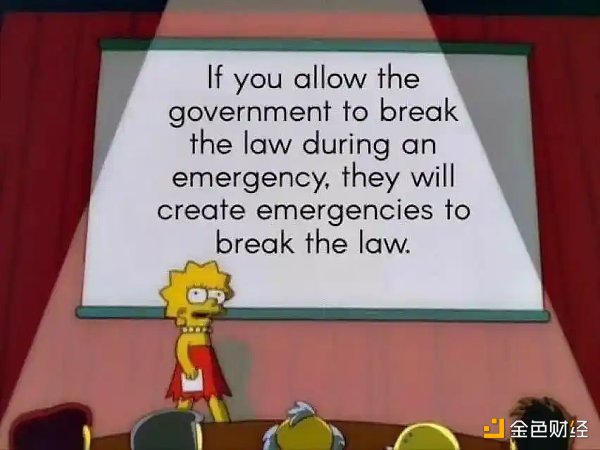
Especially after the collapse of the Bretton Woods system in the 1970s, credit currency became a wild horse, increasing infinitely. Although credit currency claims to hedge against excessive issuance with bonds, the fact is that the “debt ceiling” can be constantly broken.
The meaning of inflation seems to have also moved away from the scope of incentivizing the market. More often than not, the meaning of inflation seems only to promote nominal wage growth for lower-level workers, thereby concealing the stagnation of actual income. Just after the 1970s, real wages for American workers fell into stagnation, and the wealth gap gradually widened.

Thanks to various fancy monetary policies, the United States safely passed the financial crisis of 2008, allowing many people to continue to praise this central bank-controlled monetary system.
But some people are increasingly dissatisfied, believing that on the one hand, the crisis itself is the result of these monetary policies. It’s like the “withdrawal reaction” can be relieved by taking large amounts of drugs, but the reason why the withdrawal reaction occurs is entirely due to drug use. Seeing monetary stimulus as an effective market regulatory tool is as absurd as seeing drug use as an effective treatment.
On the other hand, the central controller is not a morally perfect person. In fact, various market rescue measures, including welfare policies that appear to be beneficial to the poor, ultimately lead to widening the wealth gap. People have found that most financial tycoons have not been punished by the financial crisis, but have instead made a lot of money. Now the wealth of the top 1% of the richest people in the United States has exceeded the total sum of the middle class (60% of the total population).
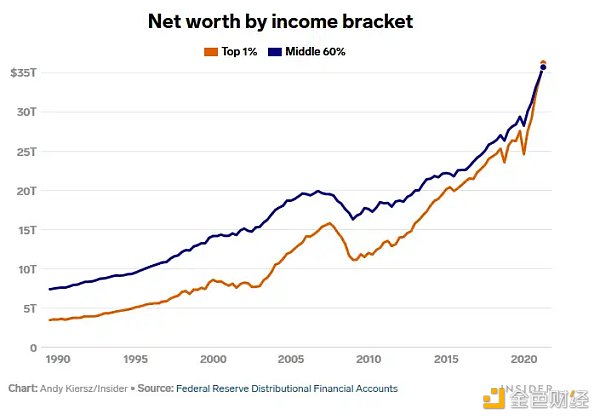
The legitimacy of robbing Peter to pay Paul
In a sense, the dilemma of Keynesianism is inevitable. Fundamentally, the absurdity of Keynesianism lies in its assumption that “overdrafting the future to help the present” is a reasonable basic concept.
Some individual scholars have criticized Keynes for being homosexual and childless, and therefore not accepting the concept of long-termism. This kind of personal attack is of course unacceptable, but how to consider the issue of “future generations” is indeed crucial. When we consider future generations, Keynes’ famous saying will be changed to “In the long run, we’re all dead, but our descendants are alive.”
Thus, the long-term versus short-term dispute is essentially a dispute between future generations and the present generation. Keynesianism’s many reliefs and stimuli are nothing more than “eating next year’s food in this year”, injecting stimulus into the market through borrowing to maintain the stability of the current order.
The literal meaning of the “eat next year’s food in this year” strategy is completely legitimate – if I have no food to eat this year and will starve to death, I will of course eat next year’s food if I have the opportunity to do so. As for what to do next year, I’ll worry about it next year. If I have no food to eat now, I won’t have next year.
However, the above legitimacy is only based on the fact that both parties weighing between the tiger year and the rabbit year are “me”. I overdrew my own grain for next year, leaving the problem to be solved by myself next year, which is my freedom. But what if Tiger and Mao are two different people?
Zhang San is about to starve to death, so he eats Li Si’s grain. As for what Li Si will do, let Li Si solve it by himself – is this behavior still legitimate? Sometimes Zhang San could eat less and not starve to death, but just felt that his physical condition was not stable enough, so he took Li Si’s grain. At the same time, Zhang San did not know whether Li Si’s grain was enough to eat. Zhang San may argue that Li Si must have enough to eat, and I only took Li Si’s leftovers. Does this make Zhang San’s behavior reasonable? Not necessarily. Zhang San took Li Si’s grain without telling him, which is obviously a kind of theft, even a murder. Even if Zhang San returns more than he took later, he cannot legitimize the act of taking it without telling.
The problem now is, Tiger and Mao are neither the present and future of the same person, nor two people at the same time, but “this generation” and “the next generation” at the human social level. What is the situation?
We are familiar with such conflicts: the previous generation obtains constantly appreciating real estate by consuming in advance, and the cost is that the next generation cannot afford to buy a house; the previous generation obtains a comfortable retirement life through the pension system, and the cost is that the next generation needs to constantly compete to ensure taxation; the previous generation pollutes the environment in exchange for wealth expansion, and the cost is that the next generation is busy with pollution governance…
The practice of “eating the grain of the previous year in the year of the tiger” was widely accepted in the 20th century thanks to several major factors: first, continuous population growth ensured that there were enough descendants to support the previous generation; second, accelerated technological progress gave the descendants more ways to take care of the previous generation; third, the economy and social structure remained generally stable, allowing the descendants’ situation to be roughly predictable.
For example, Zhang San can take grain from Li Si, Wang Wu and other people, provided that Li Si’s and others’ grain production capacity is much higher than Zhang San’s, and their lives are relatively stable without unexpected disasters and turmoil. Under the above premise, it seems to be a trivial matter for Zhang San to take the grain from Li Si without telling him. Even Li Si fully welcomes this behavior, because since this behavior is legal, Li Si also has the right to obtain more benefits from subsequent people like Wang Wu and Ma Liu.
However, this environment changed rapidly in the 21st century: first, the population is shrinking, and there are no more and more descendants; second, the limitations of technology are increasingly exposed. People have found that although technology continues to advance, the speed of treating pollution can never catch up with the speed of creating pollution; third, setbacks in the globalization process and the revolutionary development of information technology are shaking the old social structure. In this environment, the conflict between long-term and short-term interests has become sharp again.
In general “borrowing and lending” behavior, the subject is either an individual or a corporate entity. On the one hand, for the same subject, borrowing from oneself and repaying oneself, the debt to be borne by one’s future self is fully predictable, and there is no “taking without telling” behavior. Shareholders and legal representatives of companies can be transferred, but the successor has an obligation to understand the company’s debt relationship in advance, so in the case of voluntary succession, they also have an obligation to deal with the company’s debt.
On the other hand, individuals and companies are both “limited liability”, individuals will die, companies will go bankrupt, and bad debts that cannot be repaid after liquidation will be properly written off, rather than leaving endless troubles.
The fallacy of Keynesianism lies in transplanting the behavior and mechanisms originally applicable only to individuals with limited boundaries onto the overall structure of the state and society.
The contradiction lies in the fact that individual human beings are limited and mortal, while “society” is endless and immortal. Keynes confuses the individual with the collective: when considering urgent interests, he takes the individual’s standpoint, emphasizing the mortality of people, “we are all dead in the long run”, and the need for urgent regulation; while when considering overall regulation and pre-emptive overdraft behavior, he takes the standpoint of the collective interests of society, allowing the government to act on behalf of “society” and to plunder across “mortal” individuals and generations. And “society” can never be satisfied, a society can never extricate itself from “urgent needs”.
The original intention of the encryption movement
Regardless, many people hope to resist Keynesianism. Their intellectual resources may be Arendt, Marx, or more people choose to return to the ideological tradition of the Austrian school, re-emphasizing the spontaneous power of the market, opposing government regulation and excessive issuance of currency…and this is exactly the general position of early supporters of Bitcoin, and it can even be said that Bitcoin itself was born for this purpose.
Satoshi Nakamoto released the Bitcoin white paper in the midst of the financial crisis in 2008, and launched the Bitcoin network in early 2009. In the “genesis block” of Bitcoin, Nakamoto left the headline of The Times that day: “Prime Minister’s second emergency rescue of banks on the brink of collapse”, which is generally considered to be a satire and resistance against the traditional central bank system.
The so-called “critical weapons cannot replace weapons of criticism.” Nakamoto had few words but invented an unprecedentedly powerful “weapon”, which is blockchain technology. The purpose of blockchain technology is to establish a globally unimpeded digital currency system independent of central banks.
There are only two basic features of blockchain technology: decentralization and tamper resistance. The meaning of decentralization is, on the one hand, to oppose the central bank, which plays God, manipulating the market from top to bottom, and on the other hand, to emphasize that each person should be “self”-centered, with the control of property rights and identity definition rights in their own hands; tamper resistance also has a dual meaning: one is the tamper resistance of the public ledger as a historical record, and the other is the tamper resistance of the total amount and issuance speed of the currency (against regulation and inflation).
We have found that the core feature of blockchain, “self-immortality,” is exactly the core appeal of transhumanism. This is not accidental, because if we want to oppose Keynesianism from the level of ideas, rather than just from the level of tool efficiency, then we naturally have to touch on Keynes’s “anti-long-termism” concept: “In the long run, we’re all dead.”
The Crisis of Nihilism
To refute Keynes’s core argument that “in the long run we are all dead,” allow me to return to Arendt, to the philosophical dimension of “human condition.”
“After I die, let the flood come” is a typical nihilistic attitude, which is prevalent because people are finding it increasingly difficult to find meaning in life in “the long term” (whether it is others or the future), so solipsism and hedonism prevail. Even in some seemingly collectivist, altruistic people, it is becoming increasingly difficult to find meaning beyond “pure survival.”
Nihilism or the crisis of meaning is the basic condition of industrial civilization, and what causes the crisis of meaning is not only the death of God, that is, the disappearance of religious life, but more importantly, the space that traditionally allowed people to find immortality has been lost. In China, I believe it is the disappearance of “historical culture.” In the West, it is the alienation of the public sphere (Arendt believes that the public sphere has been replaced by the masses).
Everyone’s words and deeds will cause ripples in the public sphere, triggering infinite echoes, thereby extending their existence beyond individual life. At the same time, the feedback obtained from the public sphere continuously reinforces the sense of reality of everyone’s life.
Arendt said:
The presence of others assures us of the reality of the world and ourselves, for they see the same things we see and hear the same things we hear.…Our sense of reality depends completely on the reliability of the world as it surrounds us, on its being the same for all of us and anyone can verify it for himself.
Moreover, Arendt further emphasized:
The public sphere, as the common world, gathers us together, but it also prevents us from falling in on each other. What makes mass society so intolerable is not the number of people, but the fact that this world between them has lost its power to gather them together, to relate and to separate them.
According to Arendt’s distinction, the meaning of the “public realm” is to allow individuals to stand out within the group – each person shows themselves and pursues excellence through public speech and action; whereas “society” is the opposite, it is a holistic concept in which unique individuals are classified as statistical data, and ultimately form a unified, continuous, objective, and mathematical model. The factory workshop is a microcosm of modern mass society. Modern people live in neat and tidy concrete forests and work in well-organized factory workshops. These spaces only gather people as simple animals, in which people lack connection and are difficult to separate from each other. Everyone is a “replaceable part” and a “social animal” – a beast in society.

Resisting Alienation
This modern condition has long been criticized by young Marx – the alienation of modern factory labor not only results in the exploitation of workers’ bodies, but also causes spiritual emptiness and distortion.
Marx believed that the meaning of labor should help people self-affirm in the world. My labor/action leaves a mark in the external world, and this mark carries my unique imprint, that is, I can intuitively feel my own existence in the world. For example, an artist can project his or her skills, experience, interests, and intentions onto his or her “work”, and from the real work and the ripples it arouses in others, see the existence of “himself”.
Originally, this kind of projection is not exclusive to artists. An ordinary craftsman can also achieve this, but in a modern assembly line factory, workers cannot do this, they do not have their own “works” – an electronic worker on a Foxconn assembly line will not regard Apple’s iPhone as his or her own work, and the blood and sweat he puts into it is calculated as neutral labor and paid in wages, in addition to this, he cannot inject anything of his own into the product.
Marx pointed out that labor has been alienated:
First of all, labor is an external thing for the worker, that is, it does not belong to his essence: therefore, he does not affirm himself in his own labor, but denies himself…the worker is free only outside of his labor, and in his labor he feels uncomfortable,…as a result, man (the worker) only feels free in using his animal functions – eating, drinking, sex, and at most living and decorating, and feels himself to be an animal in using his human functions. Things belonging to animals become human things, and things belonging to humans become animal things.
This kind of alienation has become a common idea among modern people: “the meaning of going to work is to not go to work” – people naturally think this way. But when they’re not working, what are they pursuing? Nothing but good food, good drink, and enjoying various primitive sexual stimuli. The biggest creative act of a modern person’s life may be to decorate their home, but even this activity becomes a luxury for migrant workers with no fixed abode.
Building on Marx’s ideas, Arendt further distinguishes between “labour” and “work.” “Labour” is to meet the necessity of human beings as animals – eating and drinking, warmth and safety, housing and reproduction, and so on. Every animal also pursues these affairs, and these affairs are eternal and can never be resolved: today you eat enough, tomorrow you still have to find food, today you are safe and warm, tomorrow you may need to clean up. These endless animal needs do not allow people to “affirm themselves.”
“Work,” on the other hand, is unique to humans. Its purpose is not to deal with natural necessity, but to do something that transcends nature and rebels against nature, namely, to create an artificial world. In addition to labour and work, “action,” that is, self-expression in the public domain, is the real activity that emphasizes human nature. The artificial world created by work is meaningful only because it maintains a public domain.
The Real Digital World
The artificial world created by “work” and the “public space” maintained by “action” may not necessarily be a physical space entity, and the digital world may also provide such space. Especially in the industrial age, when traditional public space is on the verge of shrinking, many people have found a spiritual home in the digital world.
Even if it’s just a single-player game, sometimes it can provide a better meaning. In Arendt’s sense, being a wage slave at a company is not called “work,” but “labour,” while playing games at home may be the real “work.” Of course, some people play games just for “entertainment,” to relax and better prepare themselves for their wage slave life. But many people really “create” in games, and their works in games have more of their own personal stamps than the products produced in the company’s factory, bearing a more direct projection of their personal will and taste, and thus bringing more fulfillment to themselves. In addition to single-player creation, social games and more social platforms on the network are also popular, and the “action” and its ripples in the network space are completely real.

Before the advent of blockchain, digital property, wealth, and personal identities in the digital world had to be attached to a company or platform. This data could be tampered with or even completely erased at any time, leaving people with a feeling of being in an ivory tower. The significance of blockchain is to further give solidity to the entire digital world and return the power of control over personal identity and property, as well as the power to “connect and separate” people, to each individual.
Three modes of longevity
In any case, the digital world has presented opportunities for us to revive the dying meaning world or public space from the trend of industrialization. Blockchain provides a solid persistence, while cryptocurrency provides a stable scale, making people more inclined to focus on the long-term.
From this perspective, the pursuit of “longevity” by transhumanism is only a way of echoing the entire trend of blockchain, and in my opinion, it is a relatively superficial response. They only focus on “long-termism” on the animal body.
However, extending life, like “labor,” is limitless and always the “most pressing” issue. When it is extended to 120 years, how to extend it to 150 years becomes the pressing issue, and when it is extended to 150 years, how to live to 200 years becomes the pressing issue. But if longevity is always the most pressing issue hanging over one’s head, then this kind of life is nothing more than a version of the ancient concept of “living a long life” rather than “good death is better than bad life”.
Of course, I do not deny the pursuit of transhumanism, I just say that this is a superficial cause, and the more critical issue is: How can human beings transcend the “inevitable death” that can never be completely overcome and find a meaningful place?
Throughout history, there have been three dimensions of longevity: animal, divine, and human. Whether it is immortality entrusted to offspring or simply the continuation of one’s own physical life, it all comes down to living as an animal. Hoping for the other side or the afterlife is the theological path. Only workers and actors in the public sphere who leave an immortal impact on the world have a “longevity” that is exclusive to humans. These three modes of longevity are not necessarily mutually exclusive, and a person can be a parent, a health enthusiast, a devout believer, a creator, and an actor at the same time. Nevertheless, when we discuss creation and action, the dimensions of creation and action are always the highest.
The following industries are in line with the trend of blockchain:
Opposing Keynesianism in the dimension of the currency system or economics;
Pursuing longevity in the dimension of individual survival;
Rebuilding the public sphere in the dimension of group life;
Helping creators achieve immortality in the dimension of artistic creation;
Reviving historical and cultural beliefs to provide an eternal resting place…
These seemingly unrelated fields are connected and share the same “spirit of the times”, which is the characteristic of great epochal changes such as the Renaissance, the scientific revolution, the Enlightenment, etc.
We will continue to update Blocking; if you have any questions or suggestions, please contact us!
Was this article helpful?
93 out of 132 found this helpful
Related articles
- How to find the address of a whale that earned 50 times in 3 days using existing resources?
- Analysis of Beijing’s Internet 3.0 White Paper (Full Text Included): Separating from Web 3.0, Focusing on Artificial Intelligence and Metaverse
- Blockchain Capital: Why did we lead the investment in Worldcoin? We believe it will become the largest gateway to the crypto world.
- Blockchain Capital: Why did we lead the investment in Worldcoin?
- Understanding the Launch Rules of Neutron, the First Consumer Chain in the Cosmos Ecosystem
- Worldcoin has completed a $115 million C round of financing, led by Blockchain Capital.
- How can we determine whether a stablecoin is an official native asset after Multichain’s shutdown exposed asset security issues?

